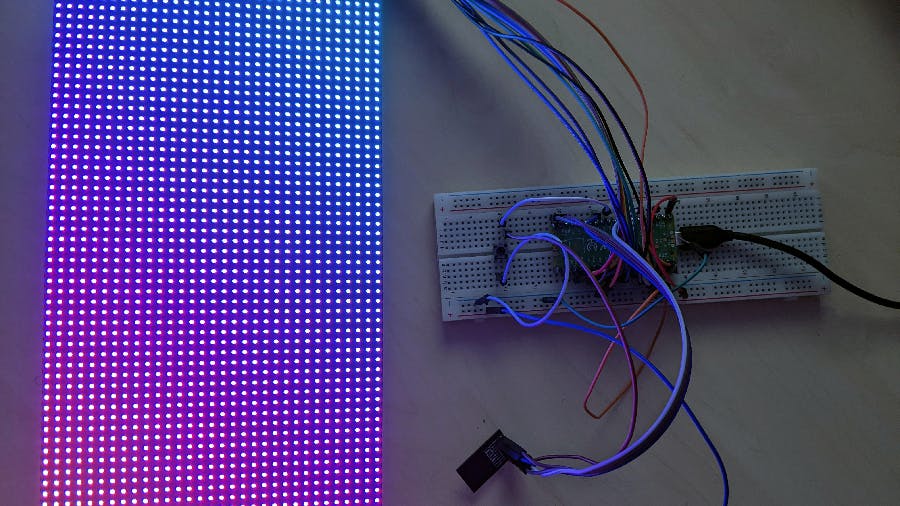
DeVayu's Raspberry Pi Pico LED Matrix Controller Drives 2,048 LEDs at 28 Frames Per Second via Wi-Fi
from hackster.io
Pseudonymous maker "DeVayu" has turned a Raspberry Pi Pico into a high-performance driver for a 64x32 RGB LED matrix — and added Wi-Fi support through a companion Espressif ESP8266, offering updates at up to 28 frames per second wirelessly.
"My original plan was to use a Raspberry Pi 3 [Model] A+ to drive this matrix using the overpriced marxist Adafruit HAT. While it worked okay-ish it was quite glitchy, especially when streaming the image over MQTT because the kernel interrupts destroyed the precise timings the matrix requires," DeVayu explains."Then a few days ago, I had the idea to use a Pico which should be better because it has no kernel to wreck the timings and because of PIO [Programmable Input/Output] it should be fast enough."
Using an example LED matrix driver script provided with the Raspberry Pi Pico Software Development Kit (SDK) as a base, DeVayu worked to get the performance up over a wireless connection — handled by an Espressif ESP-01 module connected to the Raspberry Pi Pico via UART. "One core [of the RP2040 microcontroller] just refreshes the panel at about 500Hz, the other listens for TCP data. The Pico is overclocked to 250[M]Hz, BTW.
"Because I didn't want to implement the MQTT protocol (again), I'm using a simplified protocol for transmitting the data. To improve frame rates I'm compressing everything using ZSTD, which was quite a challenge to get working due to memory constraints.The Pico now connects to my own MQTT Broker which has a custom JS [JavaScript] scripting engine. This engine detects the Pico and just sends it the frame data from another topic with the simplified protocol."
The finished system is able to play back animations over the entire matrix — 2,048 individual RGB LEDs — at a rate of around 28 frames per second, with the clever compression approach near-doubling the peak frame rate. "10 FPS was easy," DeVayu explains, "but when I pushed the baud rate of the ESP, the corruption increased, so I only got to about 15 FPS. ZSTD reduces the size of each frame to about 5 percent, which is how I was able to get the 28 FPS."
More details are available on DeVayu's Reddit thread, while the source code — plus "some very bad documentation," the maker admits — has been published to GitHub under the permissive BSD three-clause license.




Leave a comment